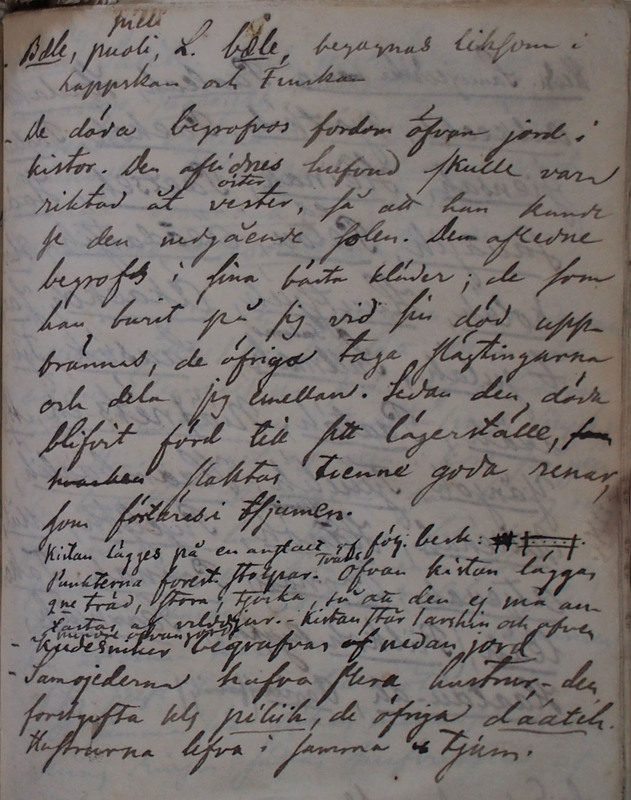Strödda ethnographiska anteckningar. 019
Title
Strödda ethnographiska anteckningar. 019
Description
|
Bäele,
puoli pieli, l[eller]. bäele, begagnas liksom iTN пеля ’half’
Lappskan och Finskan |
Bäele 'puoli' 'pieli', or bäele, is used as in Lappish and Finnish. |
|
De döda
brefvos fordom öfvan jord iSee [den döde].
kistor. Den aflidnes hufvud skulle vara riktad åt vester öster, så att han kunde se den nedgående solen. Den aflidne begrofs i sina bästa kläder; de som han burit på sig vid sin död upp- brännas, de öfriga taga slägtingarna och dela sig emellan. Sedan den döda blifvit förd till sitt lägerställe, slaktas tvenne goda renar, som förtäras i tsjumen. |
Formerly, the deceased were buried on the ground in coffins. The head of the deceased should face west (east), so that he can see the setting sun. The deceased is buried in his best clothes; those he was wearing when he died are burned; the rest are taken by the relatives and divided among them. After the deceased has been taken to his camp, two good reindeer are slaughtered and consumed in the tent. |
| Kistan lägges på en anstalt af följ[ande ]. besk[rifning]. Punkterna föres[täller]. stolpar. Tvärs Ofvan kistan läggas 2ne träd, stora, tjocka, så att den ej må av- lastas af vilddjur. - Kistan står 1 arschin och äfven mindre ofvan jord. Kudesniker begrafvas nedan jord. |
The coffin is made in the following manner according to the picture. The points are poles. Two large, thick trees are laid straight on the coffin so that it may not be opened by wild animals. The coffin is one arschin and over. Kudesniks are buried under the ground. |
| Samojederna hafva flera hustrur - den förstgifta kls[kallas] píliih,
de öfriga
TN пюды ‘the oldest of the wives’. See note [Samojeden kan taga].
dáateh.
TN таты ‘wife (not the oldest)’. See note [Samojeden kan taga].
Hustrurna lefva i samma tsjum. |
The Samoyeds have several wives – the first to be married is called píliih, the other dáateh. The wives live in the same tent. |

